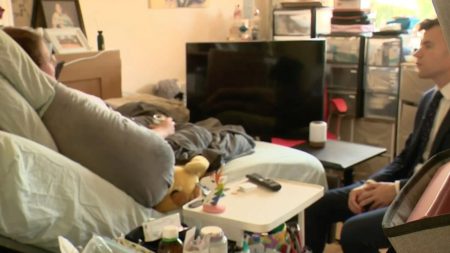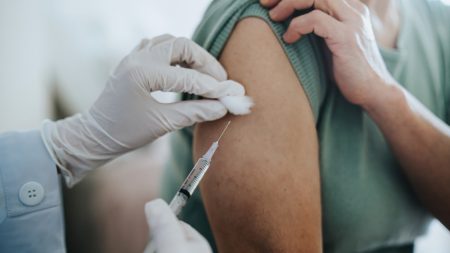The tragic death of six-week-old James “Jimmy” Alderman underscores the hidden dangers of baby slings, particularly when used for hands-free breastfeeding. Jimmy was being breastfed by his mother while she wore a baby carrier and moved about their home. Unbeknownst to his mother, Jimmy was positioned too low in the sling, an unsafe posture that led to his collapse after just five minutes. Despite immediate resuscitation efforts, Jimmy tragically passed away three days later. This heart-wrenching incident highlights a critical gap in public awareness and safety information regarding the proper use of baby slings, a gap that urgently needs bridging to prevent similar tragedies.
Senior Coroner Lydia Brown, presiding over the inquest into Jimmy’s death, expressed serious concern about the lack of accessible safety information available to parents regarding baby slings. Despite their increasing popularity in recent years, often fueled by social media endorsements, clear and consistent safety guidelines are lacking. This absence of readily available advice leaves parents vulnerable to unknowingly placing their infants in precarious situations, as was the case with Jimmy. The “baby-wearing” trend, while often touted for its potential benefits in promoting mother-child bonding, carries inherent risks, especially for very young babies, which are not adequately addressed in currently available information.
The coroner’s report specifically highlighted the absence of warnings against hands-free breastfeeding in a sling, a practice that can lead to suffocation if the baby’s airway becomes obstructed. This crucial piece of information, according to the coroner, is missing from current guidance, leaving parents unaware of the potential dangers. Furthermore, the report criticized the lack of clear visual aids illustrating safe versus unsafe sling postures. The absence of such visual guidance, coupled with the lack of explicit warnings regarding hands-free breastfeeding, creates a dangerous information vacuum that puts infants at risk. The coroner emphasized that even readily available NHS literature fails to provide adequate guidance on the safe use of baby slings, further compounding the problem.
The coroner’s Prevention of Future Deaths Report, distributed to the sling manufacturer Beco, the NHS, and the Department of Health and Social Care, serves as a clarion call for immediate action. It calls for industry-wide standards for the safe use of baby slings and the dissemination of clear and accessible safety information to parents. This includes explicit warnings about the dangers of hands-free breastfeeding in slings and the importance of maintaining a safe and visible position for the baby. The report’s recommendations aim to prevent further tragedies by equipping parents with the knowledge and understanding they need to use baby slings safely and responsibly.
The Lullaby Trust, a charity dedicated to promoting safe sleep practices for infants, corroborates the coroner’s concerns. They emphasize that the greatest risk associated with baby slings arises when a baby’s airway is compromised, either by the chin resting on the chest or the mouth and nose being covered by the parent’s clothing or skin. This highlights the crucial importance of maintaining proper positioning and ensuring the baby’s face remains visible at all times. The Trust recommends using baby carriers that securely hold the infant in an upright position, allowing parents to constantly monitor their breathing and ensure their airways remain unobstructed. This advice reinforces the coroner’s call for clearer guidance and underscores the need for parents to prioritize safe practices when using baby slings.
Jimmy’s death serves as a tragic reminder of the potential dangers associated with baby slings when used incorrectly. The lack of accessible and comprehensive safety information, coupled with the absence of clear warnings regarding hands-free breastfeeding, creates a hazardous environment for infants. The coroner’s report, along with the expert advice from organizations like the Lullaby Trust, emphasizes the urgent need for improved safety standards, readily available guidance, and increased public awareness to prevent similar tragedies in the future. The responsibility lies with manufacturers, healthcare providers, and government agencies to collaborate and ensure that parents are equipped with the knowledge and resources necessary to use baby slings safely and protect their precious infants.











